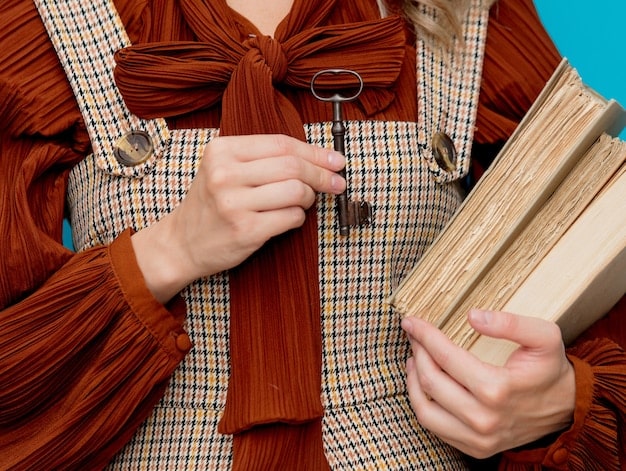Master the Art of Clothing Swaps: Refresh Your Wardrobe Free

Master the Art of Clothing Swaps: A Guide to Refreshing Your Wardrobe for Free offers a sustainable and budget-friendly way to update your style by exchanging clothes with others, promoting community, reducing textile waste, and discovering new fashion treasures without spending any money.
Tired of your current wardrobe but don’t want to break the bank? Master the Art of Clothing Swaps: A Guide to Refreshing Your Wardrobe for Free is the answer. Discover how to revitalize your closet in a sustainable and fun way.
What is a Clothing Swap and Why Should You Host One?
A clothing swap, also known as a clothes swapping party, is an event where people bring clothes they no longer wear and exchange them for items brought by others. It’s a fantastic way to refresh your wardrobe without spending any money and promote sustainable fashion practices.
Hosting a clothing swap can be incredibly rewarding. Not only does it help you declutter and find new treasures, but it also fosters community and reduces textile waste. Plus, it’s a lot of fun!
Benefits of Hosting a Clothing Swap
Hosting a clothing swap offers numerous advantages, making it a worthwhile endeavor for both you and your community.
- Cost-Effective: Refresh your wardrobe without spending a dime.
- Sustainable: Reduce textile waste and promote eco-friendly practices.
- Community Building: Connect with friends and neighbors in a fun, social setting.
- Decluttering: Get rid of unwanted items and free up closet space.
By hosting a clothing swap, you’re not just organizing an event; you’re contributing to a more sustainable and community-oriented lifestyle.

Planning Your Clothing Swap: The Essentials
Planning a successful clothing swap involves several key steps. From setting a date and inviting guests to preparing the venue and establishing guidelines, each element contributes to a smooth and enjoyable event.
Careful planning ensures that your clothing swap will be well-attended, organized, and fun for everyone involved. Here’s what you need to consider:
Setting a Date and Time
Choose a date and time that works for the majority of your potential guests. Weekends often work best, but consider the schedules of your target audience. Send out invitations well in advance to allow people to plan ahead.
Inviting Guests
Create a guest list of friends, family, and neighbors who are likely to participate. Use social media, email, or word-of-mouth to spread the word. Specify the type of clothing you’re looking to swap to ensure everyone brings relevant items.
Setting the Stage: Preparing the Venue
The venue plays a crucial role in the success of your clothing swap. The space should be clean, well-lit, and organized to make it easy for guests to browse and try on clothes. Consider these factors when preparing the venue:
- Space: Ensure there’s enough room for racks, tables, and fitting areas.
- Lighting: Good lighting is essential for displaying clothes accurately.
- Mirrors: Provide mirrors for guests to try on clothes and assess their fit.
Transforming your space into a welcoming and functional clothing swap venue will significantly enhance the overall experience for your guests.
Establishing Guidelines and Rules
Setting clear guidelines and rules is essential for ensuring a fair and organized clothing swap. These rules help manage expectations, prevent misunderstandings, and maintain order throughout the event. Consider the following:
Quality Control
Ensure that all items are clean, in good condition, and free from damage. Set a standard for the type of clothing accepted to maintain a certain level of quality.
Swapping Ratios
Determine how many items each person can bring and take. A common rule is to allow guests to take as many items as they bring, but you can adjust this based on the size and nature of your swap.

Making it Fun: Adding Extra Touches
While the main focus is on swapping clothes, adding extra touches can make your event even more enjoyable. Consider providing refreshments, playing music, and offering styling tips to enhance the overall experience.
These extra elements not only make the event more fun but also encourage guests to stay longer and engage more fully.
Refreshments
Offer snacks and drinks to keep your guests comfortable and energized. Simple options like fruit, chips, and beverages are usually sufficient. You can also ask guests to bring a dish to share, making it a potluck-style event.
Music
Play upbeat and positive music to create a lively atmosphere. Choose a playlist that appeals to a wide range of tastes and keeps the energy level high.
Promoting Sustainable Fashion
Clothing swaps are a great way to promote sustainable fashion practices. By encouraging people to recycle and reuse clothing, you’re helping to reduce textile waste and minimize the environmental impact of the fashion industry.
Highlighting the environmental benefits of clothing swaps can inspire participants to adopt more sustainable habits in their everyday lives. Here’s how you can promote sustainable fashion at your event:
- Educate: Share information about the environmental impact of fast fashion.
- Encourage: Promote the recycling and upcycling of clothing.
- Inspire: Show examples of sustainable fashion choices.
Post-Swap: What to Do with Leftovers
After the clothing swap, you’ll likely have some items that weren’t claimed. Don’t let them go to waste! There are several options for responsibly disposing of or repurposing leftover clothing.
Handling leftovers thoughtfully ensures that your event continues to promote sustainability even after it’s over. Here are a few ideas:
Donate
Donate leftover clothing to local charities or shelters. This helps those in need and ensures that the items are put to good use.
Recycle
Recycle textiles through specialized recycling programs. Many organizations accept clothing donations for recycling purposes, reducing waste and conserving resources.
| Key Point | Brief Description |
|---|---|
| ♻️ What is a Clothing Swap? | An event to exchange clothes, promoting sustainability and community. |
| 🗓️ Planning Essentials | Setting a date, inviting guests, and preparing the venue are key. |
| 👗 Setting Guidelines | Establish rules for quality, swapping ratios, and event conduct. |
| 💚 Sustainable Fashion | Promote recycling and reducing textile waste through clothing swaps. |
FAQ
▼
Examine clothes for quality, ensuring they are clean, undamaged, and still in style. Choose items you no longer wear but are likely to appeal to others.
▼
Create a welcoming atmosphere with refreshments, music, and organized displays. Clearly communicate guidelines to ensure a smooth and enjoyable experience for everyone.
▼
Use clothing racks, tables, and mannequins to showcase items. Organize clothes by type or size, and consider creating themed sections for easier browsing.
▼
Educate participants about the environmental impact of fast fashion. Encourage the recycling and upcycling of clothing, and provide information about sustainable fashion choices.
▼
Donate leftover clothing to local charities or shelters. Recycle textiles through specialized recycling programs to reduce waste and conserve resources responsibly.
Conclusion
Master the Art of Clothing Swaps: A Guide to Refreshing Your Wardrobe for Free offers a sustainable, budget-friendly way to refresh your wardrobe, foster community, and reduce textile waste. By following these tips, you can host a successful and enjoyable clothing swap, making a positive impact on both your style and the environment.





